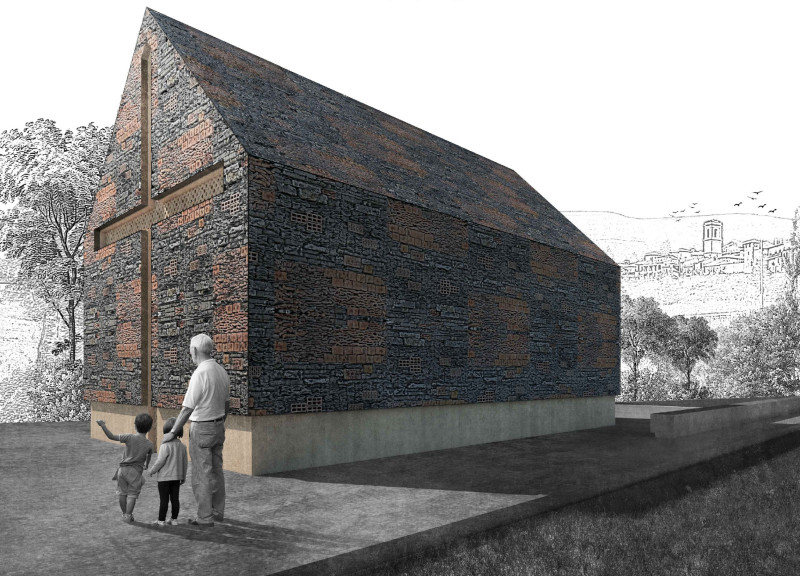5 key facts about this project
The architectural design is characterized by clean lines and a harmonious balance between open spaces and defined areas, allowing for flexibility in use. Upon entering, visitors are greeted by a spacious lobby that encourages movement and flow. This area is marked by natural light streaming through expansive windows, fostering an inviting atmosphere that immediately connects the indoor environment with the outdoor landscape. The design prioritizes transparency and visual connections, enhancing the experience within the building.
Key architectural elements include a series of multi-functional classrooms equipped with state-of-the-art technology, which facilitates contemporary learning experiences. These classrooms are arranged around a central atrium that serves not only as a circulation space but also as a social gathering area. The atrium is designed with biophilic principles in mind, integrating plants and greenery that contribute to a calming environment while improving the air quality within the space.
The choice of materials plays a pivotal role in the project’s overall aesthetic and functionality. A combination of concrete, glass, and sustainably sourced wood is utilized throughout the design. The concrete provides structural integrity and a sense of permanence, while the glass elements enhance visual transparency and bring in abundant natural light. The use of wood serves to warm the interior spaces, creating a welcoming feel and establishing a connection to nature. The thoughtful selection of these materials not only supports the functional aspects of the building but also aligns with sustainable design principles, promoting energy efficiency and reducing the carbon footprint.
Unique design approaches seen in this project include the integration of outdoor learning spaces, which extend the educational experience beyond traditional classroom settings. These spaces include outdoor classrooms and gathering areas, designed to encourage a connection with the environment and foster collaborative learning. By blurring the lines between indoor and outdoor, the architecture celebrates nature and recognizes its importance in the educational process.
The project also emphasizes accessibility, ensuring that all areas are designed to be navigable by individuals of all abilities. Inclusive design principles inform the layout and flow, with thoughtful consideration given to varied user experiences. This focus on accessibility enhances the community feel of the building, making it an inviting space for all.
Furthermore, the architectural design incorporates sustainable water management systems, such as rainwater harvesting and native landscaping, which not only mitigate the building’s environmental impact but also educate the occupants about responsible resource management. The landscape design is deliberately crafted to complement the architecture, creating an engaging outdoor environment that supports community gatherings and outdoor activities.
Throughout the design process, the architects have prioritized community input and engagement, ensuring that the final architectural outcome resonates with local culture and values. This project stands as a testament to the potential of architecture to inspire and facilitate positive social interactions and educational opportunities within the community.
Readers interested in gaining deeper insights into this architectural project are encouraged to explore the architectural plans, sections, designs, and ideas that illustrate the thoughtful considerations and innovations employed throughout the design process. Each element contributes to a comprehensive understanding of how architecture can shape experiences and foster connections in both formal and informal settings. The presentation of this project is a valuable resource for anyone looking to explore contemporary architectural practices and their impact on community dynamics.


 Matteo Scoccia,
Matteo Scoccia, 




















